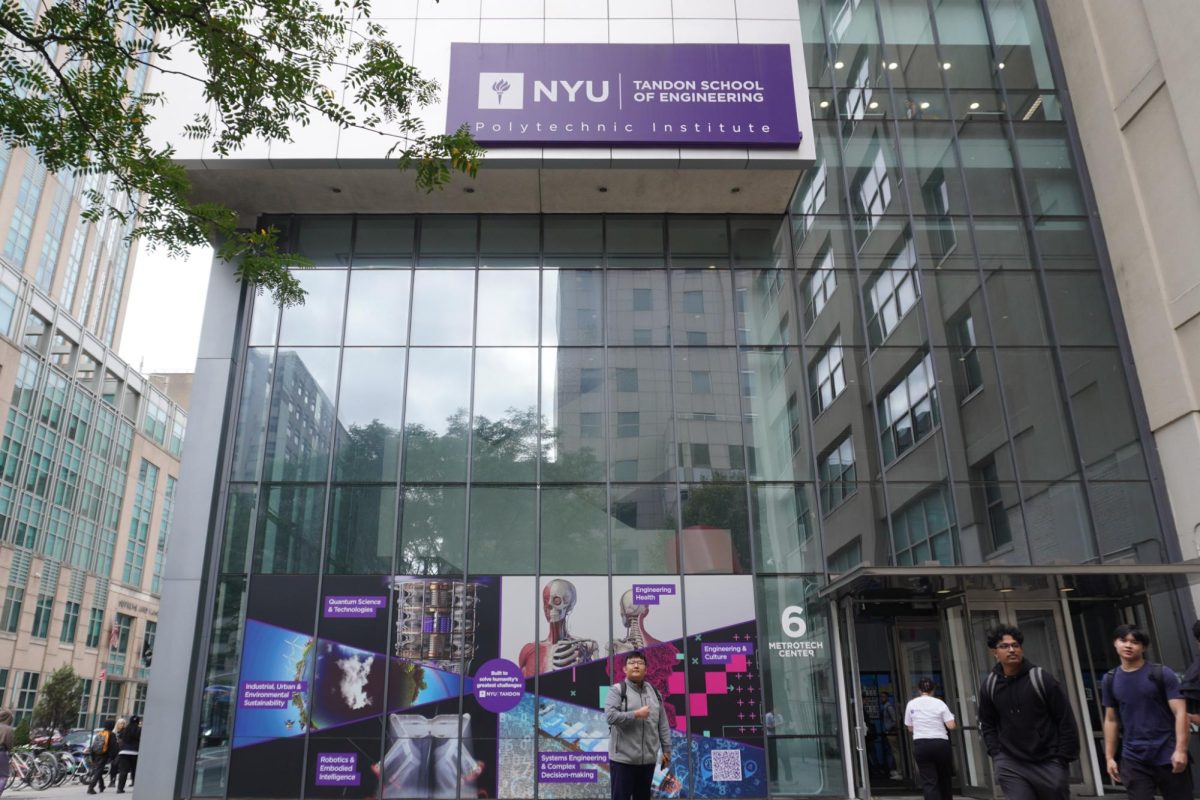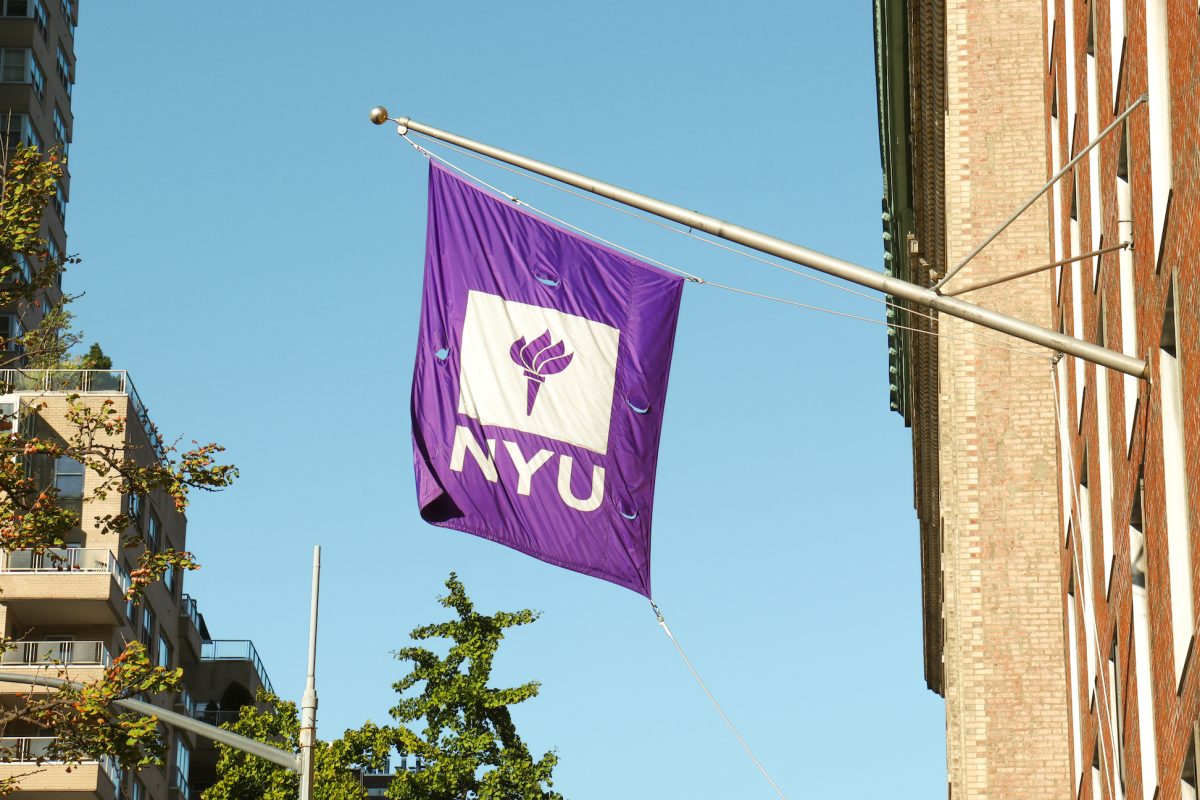The NYU students behind Mamdani’s historic win
Nearing the final week of Zohran Mamdani’s historic campaign for mayor, CAS junior Sebastian Martinez found themselves addressing nearly 13,000 attendees at the mayor-elect’s “NYC is not for sale” rally in Forest Hills Stadium. Headlined by politicians like Bernie Sanders, Alexandra Ocasio-Cortez and Kathy Hochul, the Oct. 26 rally acted as a final push before the general election — and Martinez, who served as one of Mamdani’s field coordinators for the Bronx and Upper Manhattan, was one of the team members to kick it off.
But Martinez’s relationship with the mayor-elect began years before his run. They first encountered Mamdani while researching for their work as a tenant organizer in Harlem, througha YouTube video of the then-assemblymember discussing public housing. Over the years, as they established their membership within the Democratic Socialists of America, Martinez continued running into him at rallies before door-knocking with him for assemblymember Claire Valdez back in December 2023.
“I remember vividly, because he made fun of me and said I looked like I was in a sitcom from the ’80s, because I had really long hair at the time,” Martinez said. “He eventually made that joke after the Forest Hills Stadium rally we had, where he took my passport, looked at it and was like ‘Seb, come on,’ and then left.”
The heart of Mamdani’s grassroots campaign for mayor was its canvassing efforts, driven byover 100,000 volunteers who knocked on 3 million doors. Already within the assemblymember’s orbit, Martinez came to lead the first canvassing operation in Parkchester, Bronx as a volunteer in December 2024. But turnout was small — out of the 500 people that came out citywide to canvass for the launch, only 18 people visited the Bronx, and subsequent weekly canvasses hovered around 10 until April. Martinez knew it would be an uphill battle.
“I told my friends after the launch day, ‘He’s never going to win.’ But I never joined because I thought we were going to win — which, if he heard me say that, he’d hate me,” Martinez said. “I joined because I thought that he was fighting for something right and would build a base that will obviously build DSA, build the tenants’ block in New York, and build a lot of South Asian and Latino organizing. Those outcomes were the things I wanted to see, even if he lost.”
Bringing the campaign to every borough
Martinez focused their canvassing on the Bronx and Harlem, where they were born and raised. What they saw were two areas in New York City historically cast aside by other political campaigns, and they wanted to be directly involved in a movement that prioritized outreach to the neighborhoods.
“I thought that the Bronx was the area that needed these policies the most, and will feel this message of affordability — maybe not necessarily of socialism, but of politics that care about the working class and the working poor — more than any area in New York,” Martinez said.
CAS junior and NYU YDSA organizer Tej Budhram felt the same about his home of Jamaica, Queens. Spending 20 hours a week leading canvasses throughout Southeast Queens, especially the St. Albans neighborhood, Budhram said he wanted to ensure that Mamdani was reaching areas that politicians have not engaged with since former President Barack Obama’s campaigns.
“It’s very working class, lower class, has some high rates of smoking, some of the worst air quality in the city and very much, it’s the area that’s become very apathetic politically,” Budhram said. “And by virtue of that, I became very apathetic politically growing up.”
When Budhram first saw Mamdani at rallies and events throughout the city, including an NYUcontract faculty union rally, he saw the assemblymember as a regular politician. But as Mamdani spoke with clarity about his affordability policies and their tangibility to working-class families like his own, it became clear that what was powerful about Mamdani was the message he represented.
“To get from my part of Queens to my high school, which is a five-minute drive, it’s a 32-minute bus ride because the buses are just slow as fuck,” Budhram said. “My dad drove the bus that Zohran made free a couple years ago, the Q4. He, through personal experience, told me the amount of threats he received as a bus driver went down by 300% just because they were free. You don’t need to argue with people. If you can’t afford to pay, you don’t need to pay.”
Back in the Bronx, Martinez was leading three canvasses a week from January to early April, telling residents of Norwood, Co-Op City and Parkchester what the mayor-elect’spolicies could mean for them. Gradually, they rose the ranks — from volunteer, to field lead and eventually to field coordinator. They also co-founded Latinos for Zohran to make the campaign accessible to Spanish-speaking voters and Students for Zohran to engage college voters.
“We realized that his quippy social media wasn’t gonna be able to target the Dominican moms on Facebook in Washington Heights or the Mexican moms in the Bronx,” Martinez said. “All those communities are tied together. The people who are often left last are the Black and Latino voters, who also tend to live in the Bronx and to be not registered to vote.”
A city for all
Though increasing affordability was the crux of the campaign, CAS sophomore Molly Buhl-Eaton said it was Mamdani’s commitment to protecting trans rights that familiarized her with his candidacy. Unlike other volunteers, Buhl-Eaton found the campaign through her activism with DSA’s Trans Rights & Bodily Autonomy Campaign Commission and advocacy against NYU Langone’s decision todeny gender-affirming care to two minors back in February.
“I think I was upset at NYU and the fact that this was happening in New York — I had moved here because it was a safe haven for queer people, and the fact that it was coming here made me so angry,” Buhl-Eaton said. “I wanted to do anything I could to fight back against that, and Zohran’s campaign presented an opportunity.”
Through TRBA, Buhl-Eaton worked with other transgender activists to define the Mayor-elect’s platformfor LGBTQ+ protections, with an emphasis on safeguarding gender-affirming care.
“A lot of the discourse from Zohran’s win is that Democrats should focus on affordability,” she said. “I think Zohran has shown, you can still make affordability the central part of your platform while also still standing up for marginalized communities and not abandoning those beliefs.”
Canvassing made the campaign
Even as the campaign’s canvassers, supporters and social media presence slowly began tipping the scale, Mamdani was still the underdog in a race of organized people versus organized money. While Mamdaniswept the Bronx for the general election, the mayor-elect had lost the Bronx and Staten Island to former Gov. Andrew Cuomo during the primary. The limited number of volunteers for the Bronx remained a concern all the way up to Nov. 4.
“I genuinely fell to my knees and started crying in the security line to Brooklyn Paramount, which was where the victory party was held, because I thought we were losing the Bronx again until election night,” Martinez said. “It was something electric, because we got a majority in the Bronx and then a supermajority in the areas which I thought were going to be the toughest places to get, like those votes in the South Bronx along Fordham Road. We won Co-op City, which has not gone for a progressive in decades.”
CAS senior Ujji Bathla, who was a paid canvasser for the campaign, said that organizing would happen both outside and inside the door. While knocking on someone’s door could leave you vulnerable to incidents of racism and Islamophobia, Bathla said, it also created an opening for honest conversations between strangers and within families alike.
“When I was canvassing in very heavily Bangladeshi neighborhoods, mostly immigrants, the amount of parents who opened the door, saw Zohran and said, ‘Oh, you know, my teenage kid, has already told me about this. I’m already going to vote for him,’ — that was really, really amazing,” Bathla said. “I was like, holy shit, like the kids are paying attention and they can see what’s right, and they’re canvassing their parents before I even need to be here.”
When the rally came in late October, it was a full-circle moment for Martinez. With canvassing having been the driving engine for Mamdani’s campaign since he wasfirst polling at 1% back in December, each of his four rallies opened with a statement from a canvasser. Past renditions included a how-to on canvassing in the city, as well as the youngest and oldest canvassers of the campaign. But on Sunday, Oct. 26, it was their turn: Martinez stood alongside another longtime volunteer, Adrianna Barios, to kick off the last stretch of canvassing before the general.
From promise to practice
But with Mamdani now as this city’s mayor-elect, the work has yet to stop, Bathla said. Carrying over the momentum the campaign generated is critical in actually enacting his promises to increase affordability in the city.
“People talk a lot about Obama’s ’08 campaign in reference to this, but the difference is that after Obama got elected, he called off the volunteers. He said, ‘Go home. There’s nothing left to do. We got this from here,’” Bathla said. “I think it’s fair to say after those two terms, Obama didn’t really have it from there, and he fell short on a lot of those promises. If we’re going to implement the affordability agenda, every single volunteer who is involved in the campaign to elect Zohran has to be involved in the campaign to govern with Zohran.”
Alongside established organizing blocs like DSA, the nonprofitOur Time — headed by former field coordinators and leads of the campaign — was recently created to continue applying pressure and ensure that these affordability measures are enacted. This past Sunday, DSA, Our Time and lawmakerskicked off their “Tax the Rich” campaign with a rally at Union Square as the first step in securing the funding required for Mamdani’s proposals.
Although the campaign has come to a close, the impact of canvassing has stayed with its volunteers, changing the political landscape of New York City towards increased political engagement.
“This campaign was the first campaign that ever knocked on my mom’s door,” Martinez said. “She’s lived in the country for 40 years and has been a citizen for 15, and no campaign has ever door-knocked except this one. She’s like an ardent anti-politics person and proudly wore her Moms for Mamdani pin as she walked to the voting poll.”
Budhram said the campaign’s emphasis on advocating for working-class New Yorkers came to change his relationship with his home. Having witnessed the political possibilities of a campaign that spoke to every New Yorker makes Budhram optimistic that socialist policies can stand against traditional city politics.
“There’s a tendency at NYU to sort of take people that are from New York and make them hate the people they grew up around,” Budhram said. “My entire life since I was 14, I was almost in a mad dash to escape being lower class. I think through the Zohran campaign, through seeing people around me be emboldened by it and through being a member of DSA, it gave me a lot of pride in being a working-class person in New York City.”
Contact Julia Kim at[email protected].
























































































































































